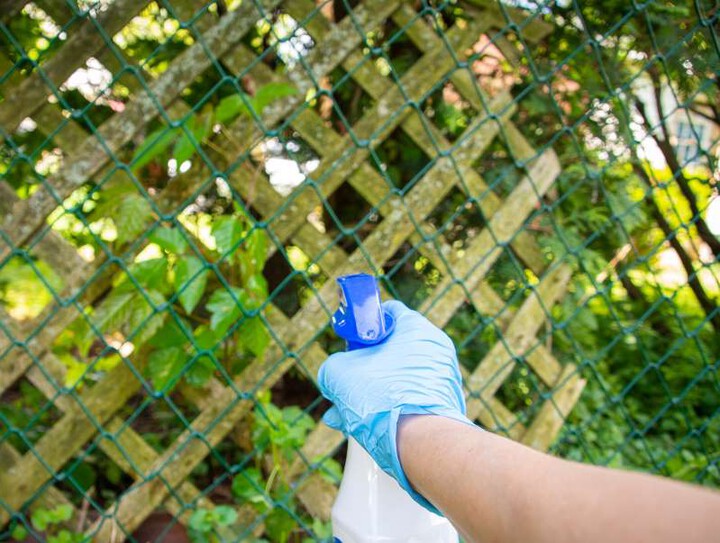
Nothing ruins a day outdoors like a run-in with poison ivy. "Poison ivy is a member of the Toxicodendron genus of plants in the Anacardaceae family that includes poison oak and poison sumac," explains gardening expert Melinda Myers. "All parts of poison ivy contain an oil resin called urushiol that causes skin rashes."
Found throughout most of the United States, it's not uncommon for poison ivy plants to pop up in residential backyards and gardens—especially if you live in a rural area. "Poison ivy prefers moist woodland environments, but can be found in gardens and landscapes, creeping in from surrounding woods, along fence rows, pastures, and disturbed sites where birds and deer visit and deposit the seeds," Myers explains. Fortunately, if you do happen to find a patch of poison ivy in your garden, she says there are ways to safely remove it without getting a rash.
Learn how to identify poison ivy in your garden.
Myers says if you know what to look for, you can spot (and remove) poison ivy in your garden while the plants are still small and manageable. "Poison ivy has leaves in clusters of three, called a compound leaf," she explains. "These clusters alternate along the stem—they are not opposite each other. The leaves can be shiny especially when they emerge in spring and the edges of the leaves may be wavy, have teeth, or be smooth. The leaves usually turn red in fall but can be yellow. The flowers appear in spring and berries ripen to a grayish-white in late summer and persist into winter."
Don't underdress for the occasion.
Since all parts of a plant, including the stem, leaves, and roots, contain rash-causing urushiol oil, Myers says it's crucial to protect your skin when dealing with poison ivy. "Always dress for the job," she says. "Cover your skin, wear waterproof gloves, and I would even suggest safety glasses when managing poison ivy plants and debris."
Try a targeted spray.
Once your face, hands, and skin are covered, Myers says you can use a poison ivy-specific chemical spray, such as Ortho Max Poison Ivy and Tough Brush Killer (from $8.99, amazon.com), to eliminate a patch of poison ivy plants in your garden. "Be sure to read and follow label directions," she says. "You will need multiple applications as this plant has an extensive root system and will keep sending up new stems. Keep in mind these chemicals will damage or kill any nearby plants they touch, so spot treat or paint the poison ivy leaves with the chemical to avoid damaging desirable plants."
Remove it manually.
If you prefer to keep your garden chemical-free, Myers says you can simply keep cutting poison ivy back to remove it. "Continually removing the above ground portion eventually kills the plant, but you must be persistent and thorough," she explains. Myers also says you can help diminish the growth of poison ivy in your garden by covering it. "Control isolated patches of poison ivy with black plastic. Edge the poison ivy infested area and cover with black plastic for several months or clear plastic for six to eight weeks during the hottest months of the growing season."
Dispose of poison ivy properly.
After you've removed a poison ivy plant from your backyard, Myers says it's important to dispose of it correctly. "Do not burn or compost poison ivy debris," she says. "Instead, put all poison ivy debris into large garbage bags and dispose of it in the trash. Rake the area to capture any stems you may have missed. Mulching the area with a four- to six-inch layer of clean woodchips can help isolate any urushiol-containing plant debris you may have missed, reducing the risk of future exposure."